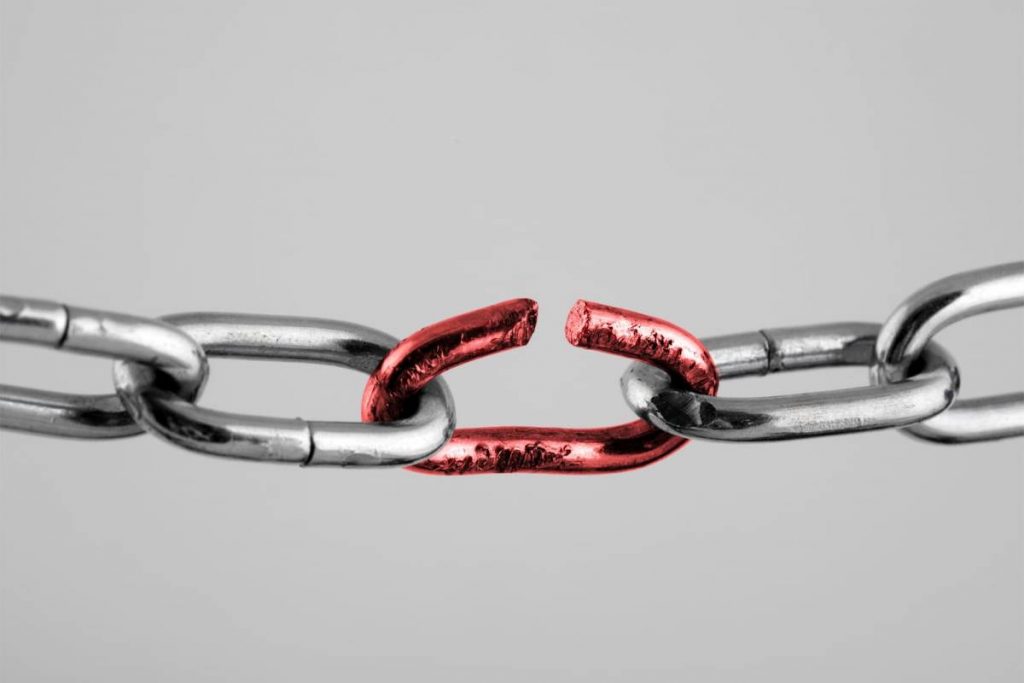Broken links are one of those things you don’t notice — until they start messing with your SEO. Pages stop working, visitors hit dead ends, and slowly, rankings slip.
That’s where a broken backlink checker helps. It finds the cracks before they turn into real problems — and sometimes, it even finds opportunity.
In this guide, you’ll see:
- What broken backlinks actually are (and why they matter).
- Tools — both free and paid — that catch them fast.
- How to use broken links for smart, non-spammy link building.
Let’s make your site cleaner, stronger, and maybe even get you a few backlinks along the way.
What Are Broken Backlinks?
A broken backlink is just what it sounds like — a link that’s supposed to point to your site, but ends up going nowhere. Maybe the page was deleted. Maybe the URL changed. Either way, someone’s trying to send traffic your way, and it’s hitting a wall.
It doesn’t seem like a big deal at first. But if you’ve got a bunch of these floating around the web, they start to add up. Search engines notice. Visitors get annoyed. And you miss out on traffic, trust, and the value that link was meant to give you.
That’s why using a broken link checker matters — it helps you find and fix those dead ends before they start quietly pulling your site down.
Why It’s Important to Fix Broken Backlinks
Most broken links don’t scream for attention — they just quietly sit there, doing damage in the background. You don’t see the traffic you’re missing. You don’t feel the hit to your rankings. But over time, it adds up.
Here’s why fixing them matters:
- Lost SEO value — If a high-authority site links to a dead page, you lose the ranking power that link was supposed to give you.
- Bad user experience — Visitors click expecting value and land on an error page. That hurts trust — and bounce rates.
- Missed traffic — A broken link means people who wanted to visit your site can’t. That’s potential customers slipping through the cracks.
Fixing them is low-effort, high-impact — and the right tools make it way easier. Let’s dive in.
Using Broken Backlinks for Link Building
Fixing broken links is one thing — but finding them on other people’s sites? That’s where link building comes in.
Let’s say a blog links to a guide that no longer exists. You’ve got a similar guide — or even a better one. Reach out, let them know the link is broken, and suggest yours as a replacement. It’s helpful, relevant, and way more likely to get a “yes” than a cold pitch.
It’s a simple tactic, but it works — especially if you do it right.
Here’s how it helps:
- You’re offering value first, not just asking for a link.
- You’re targeting real, live pages that already rank.
- You’re building links naturally, without sounding like spam.
Done well, broken backlink building is one of the least annoying — and most effective — ways to earn links.

Best Free Broken Link Checker Tools for SEO
You don’t always need a fancy paid tool to catch broken links. Some of the best ones are free, fast, and do the job well — especially if you know what you’re looking for. Here are a few worth trying.
1. Ahrefs Free Broken Link Checker
This one’s super simple — just pop in a URL, and it shows you broken inbound or outbound links. No login, no fluff. It pulls from Ahrefs’ massive data index, so the results are solid and up to date.
Key Features:
- Finds broken links pointing to (or from) a page;
- Highlights dead pages with a lot of backlinks;
- Quick scan, no signup needed.
2. Screaming Frog SEO Spider (Free Version)
If you’re a bit more hands-on, this desktop app lets you crawl up to 500 URLs at a time. It shows broken links, where they live, and what’s causing the issue. It’s more technical — but powerful once you get the hang of it.
Key Features:
- Flags 404s and 500s across your site;
- Shows exactly which pages are linking to broken ones;
- Exports everything so you can fix it fast.
3. Broken Link Checker (WordPress Plugin)
Running a WordPress site? This plugin keeps an eye on your links 24/7. It checks posts, pages, images — even comments — and tells you when something breaks. You can fix it without even opening the post.
Key Features:
- Monitors links automatically in the background;
- Lets you edit or unlink broken stuff right from the dashboard;
- Sends alerts so you don’t have to check manually.
4. Dead Link Checker
This one’s web-based and dead simple. Just enter a URL and it’ll scan the whole site (or just a single page) for broken links. Great for quick checks without installing anything.
Key Features:
- Single page or full-site scans;
- Highlights broken internal and external links;
- No download, works right in your browser.
5. Dr. Link Check
Another easy browser tool — clean interface, straightforward results. It checks up to 1,500 links per scan for free, and it’s especially handy for small businesses or portfolio sites.
Key Features:
- Scans up to 1,500 links on a schedule;
- Shows which links are broken and why;
- Works via the cloud — no software to install.
If you want quick insights, go with Ahrefs. If you like digging into the details, Screaming Frog is your friend. And if you’re on WordPress, the plugin will keep things tidy without much effort. Each free broken link checker has its sweet spot — just pick the one that fits how you work.
Best Paid Broken Link Checker Tools for SEO
Free tools are great when you’re just starting out. But if you’re dealing with bigger sites, working with clients, or just want to move faster — paid tools make life easier. They save time, catch more problems, and give you room to scale.
1. Screaming Frog (Paid Version)
This one’s a classic for a reason. The paid version lifts the 500 URL limit and adds a bunch of features that make technical audits smoother — like scheduling, API pulls, and integrations with Google tools. It’s not the prettiest interface, but it’s fast and gets out of your way.
What you get:
- Unlimited crawls;
- Finds broken links, redirects, orphan pages;
- Pulls in data from GA and Search Console.
Price: Roughly $185 a year — one-time payment, no monthly bills
2. Ahrefs
If you’re already using Ahrefs for backlinks, you’ll love how it handles broken link tracking. It spots dead internal pages, lost backlinks, and even gives you ideas for outreach by showing broken links on other sites.
What you get:
- Alerts when links break — yours or someone else’s;
- Full backlink tracking and history;
- Site audits that run on autopilot.
Price: Starts at $129/month
3. Sitebulb
This one’s a bit more visual — and that’s a good thing. It crawls your whole site and gives you clear reports, charts, and breakdowns. If you like to see the full picture and share it with a team or client, it’s a solid choice.
What you get:
- Clean reports with graphs and insights;
- Catches broken links, redirects, and more;
- Built-in tips on how to fix issues.
Price: Starts at around $11/month per user
If you’re deep into SEO work, these tools earn their keep fast. Screaming Frog is great if you want control. Ahrefs gives you backlink power with broken link tracking built in. Sitebulb is your go-to if you want everything mapped out and easy to explain.
Conclusions
Broken links happen — it’s part of running a site. But letting them pile up quietly in the background? That’s where the real damage kicks in.
Whether you’re cleaning up your own content or looking for link building chances, the right tool makes a difference. Check out some broken backlink checkers online to get your bearings. If you’re working at scale, investing in a paid one will save you hours and help you stay ahead.
It’s not the flashiest part of SEO — but it’s one of the smartest to get right.


